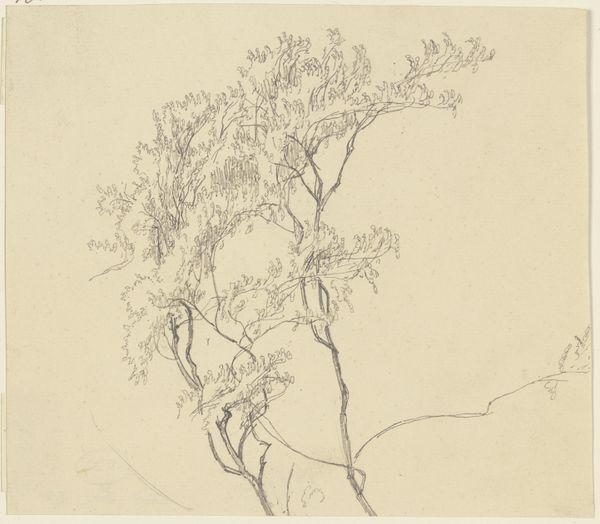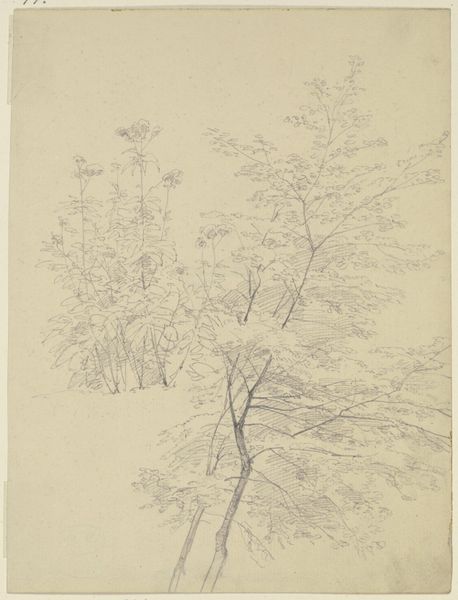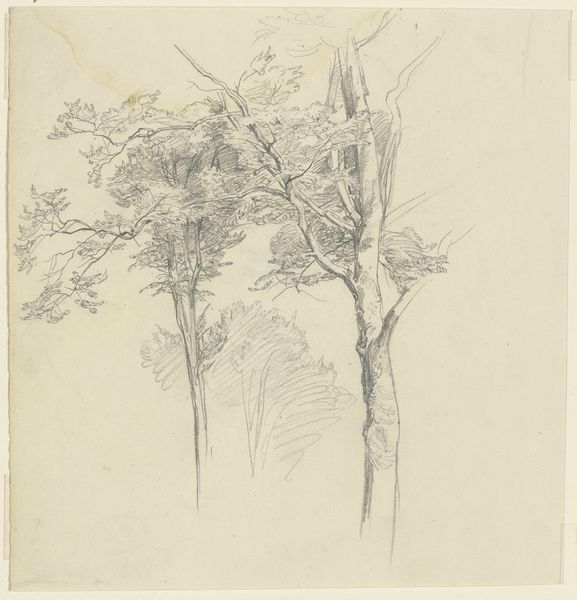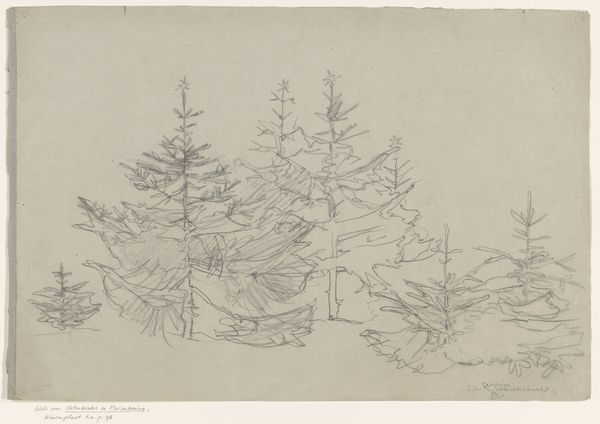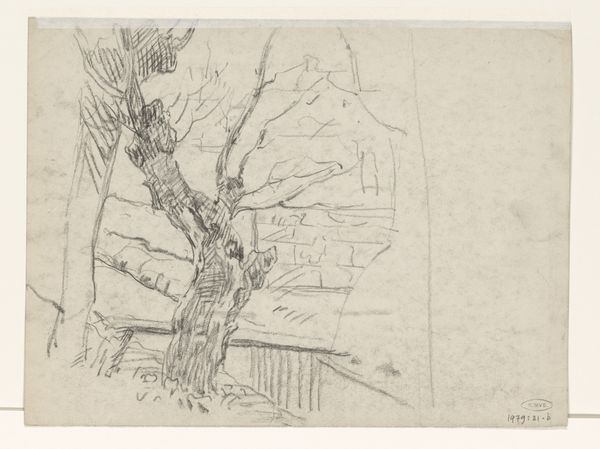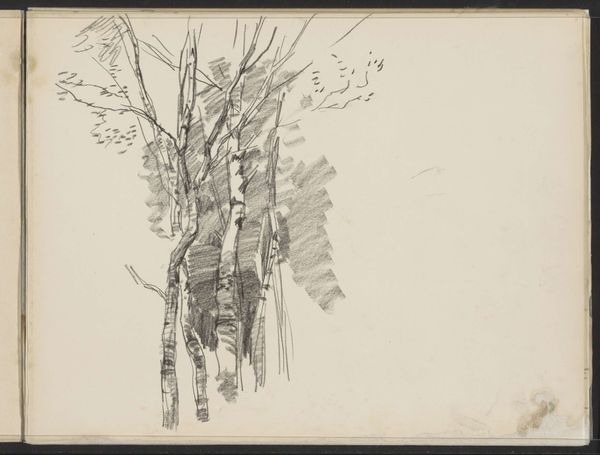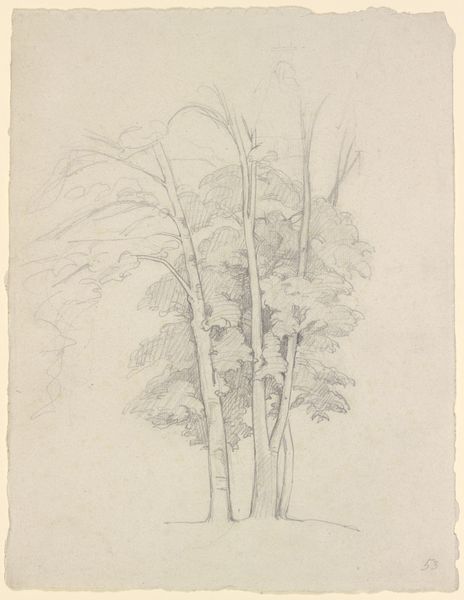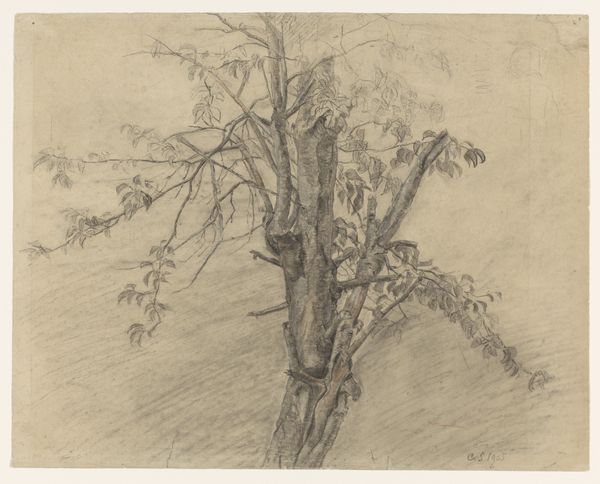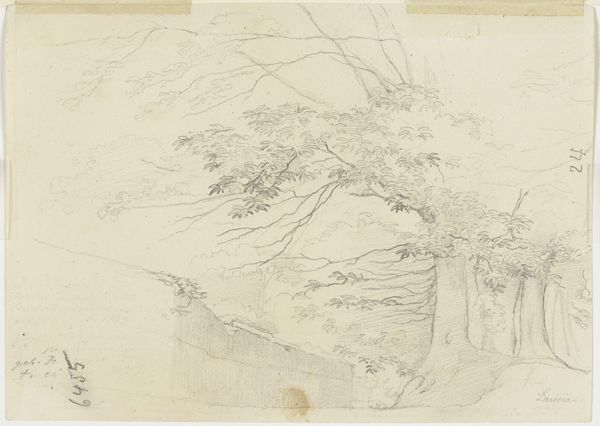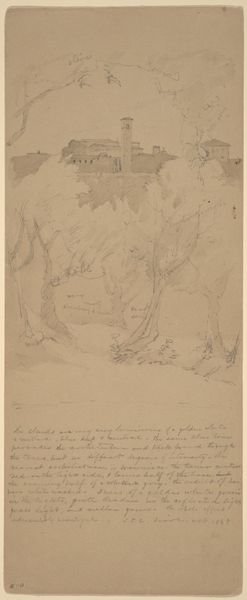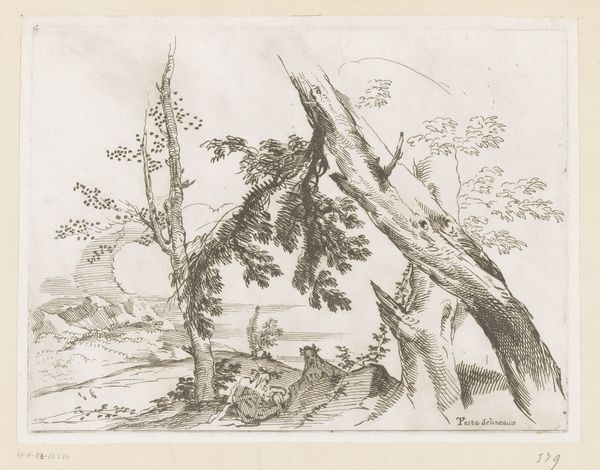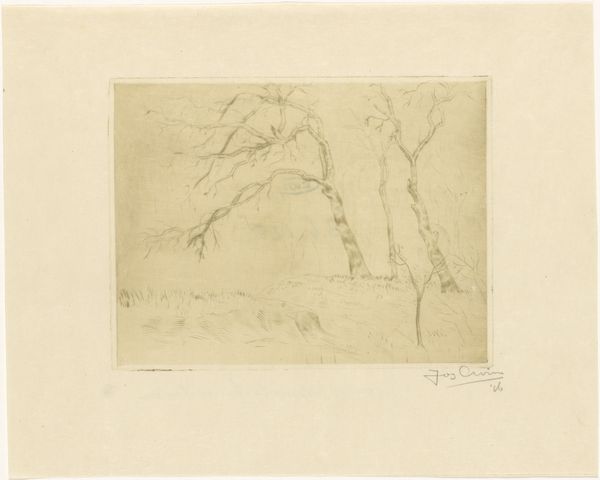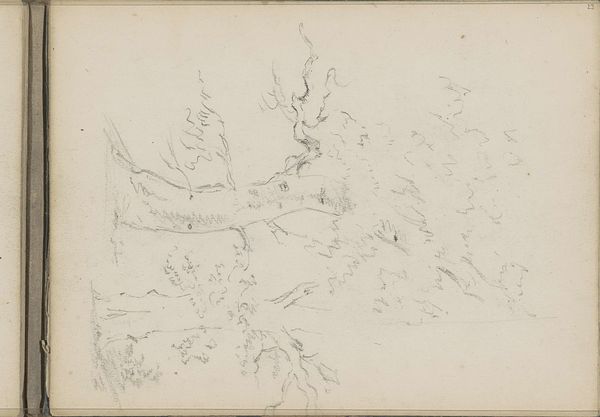
drawing
#
drawing
#
landscape
Dimensions: sheet: 25.08 × 35.4 cm (9 7/8 × 13 15/16 in.)
Copyright: National Gallery of Art: CC0 1.0
Curator: Here we have Andrew Fisher Bunner's "Blackberry," a drawing created in 1866. What's your first take on this one? Editor: A hesitant dance in grey... fragile, almost a ghost of a blackberry bramble. There’s a delicate melancholy here, isn't there? Curator: Indeed. Bunner’s attention to detail, capturing the almost mournful droop of the leaves, certainly evokes a feeling of quiet introspection. Blackberries, beyond their literal nature, have often stood as emblems for abundance, sometimes warning of unforeseen tangles or hardship lurking just beyond their sweet reward. Editor: You know, thinking about the thorns on the stem, and how meticulously he renders them – they do add a layer of caution. I'm reminded that, even within the most seemingly inviting of landscapes, there exists a reminder of defense and self-preservation. Curator: A necessary element of life, really. Landscape drawings like these aren’t just pretty pictures. They often symbolize something deeper about the human condition, a connection to nature's cycles and struggles, of life. The simplicity of a single blackberry branch also amplifies that reflection – stripped back to its rawest components. Editor: That bareness truly is compelling. And what about the time it was made, 1866? Just after the Civil War. Do you suppose that sparseness is intentional—a comment on the rebuilding or perhaps, mourning? Curator: A potent question. Post-war America would certainly impact an artist's view. Bunner perhaps distilled broader themes into a close and thoughtful observation on his nearby surroundings. Perhaps a search for enduring life, new beginnings even, after a long period of destruction. Editor: A beautiful thought! The plant trying to spread after times of war... It does make me look at it differently, now noticing not the starkness, but rather its potential to regrow. Curator: Which in many ways echoes what art is all about, isn't it? The power of images to shift perspective, layering different ways to find something unexpected, beautiful. Editor: Indeed. It leaves us pondering the interconnectedness between our inner landscape and the outside world. A reminder of resilience, maybe. Curator: And sometimes all it takes is a simple drawing to begin such considerations. Thank you.
Comments
No comments
Be the first to comment and join the conversation on the ultimate creative platform.
